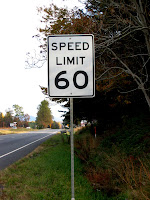I had e-mailed National Public Radio (NPR) back on November 14 after their broadcast of a story on the evening program "All Things Considered" about an alleged record-breaking cross-country road trip: "I don't understand why you seemingly condoned this 'outlaw' racer's speed run across the country. With more than 43,000 deaths still occurring annually on our highways, glorifying this sort of irresponsible behavior is totally inappropriate for NPR. You wouldn't cover the experiences of a driver who drinks alcohol to excess, would you?"
The following day (Thursday) when NPR airs some of the e-mails, I missed that segment of the program.
Earlier this week however, NPR responded by e-mail:
Dear Mike,
Thank you for contacting NPR's All Things Considered.
We regret that our programming has not met your expectations. We strive to offer the highest quality of news and information available. Listener feedback helps us to accomplish this goal.
We welcome praise, as well as criticism, and your thoughts will be taken into consideration.
Thank you for listening to All Things Considered, and for your continued support of public broadcasting. For the latest news and information, visit NPR.org.
Sincerely,
Jeff
NPR Services
202-513-3232
www.npr.org
Obviously, this was a canned response, but still it was more than I expected. The "outlaw" who was the subject of the story raced alone against the clock from New York City to Los Angeles. He made the run in less than 32 hours, supposedly breaking a record last set in 1983. He had to average something like 90 mph over the entire length of the trip. Being alone, he had to stay awake the whole time, stopping (infrequently) only for fuel and bathroom breaks.
So not only he did he risk others' lives due to his speed, but also he had to be greatly fatigued after the first half day or so, compounded by driving mostly at night and constantly on the lookout for the police. In my opinion, this is idiocy of the highest degree, but NPR made no mention of his irresponsibility.










